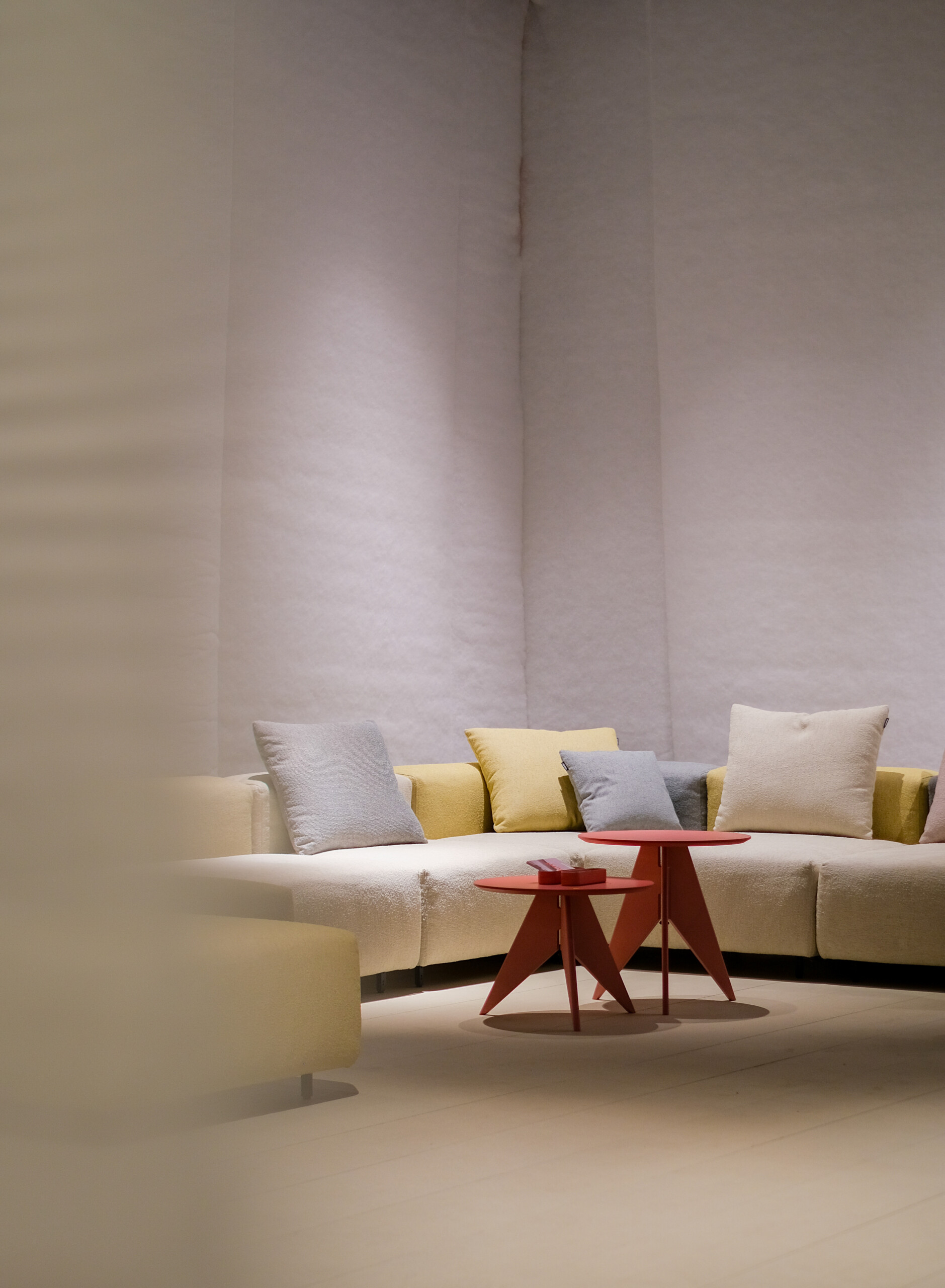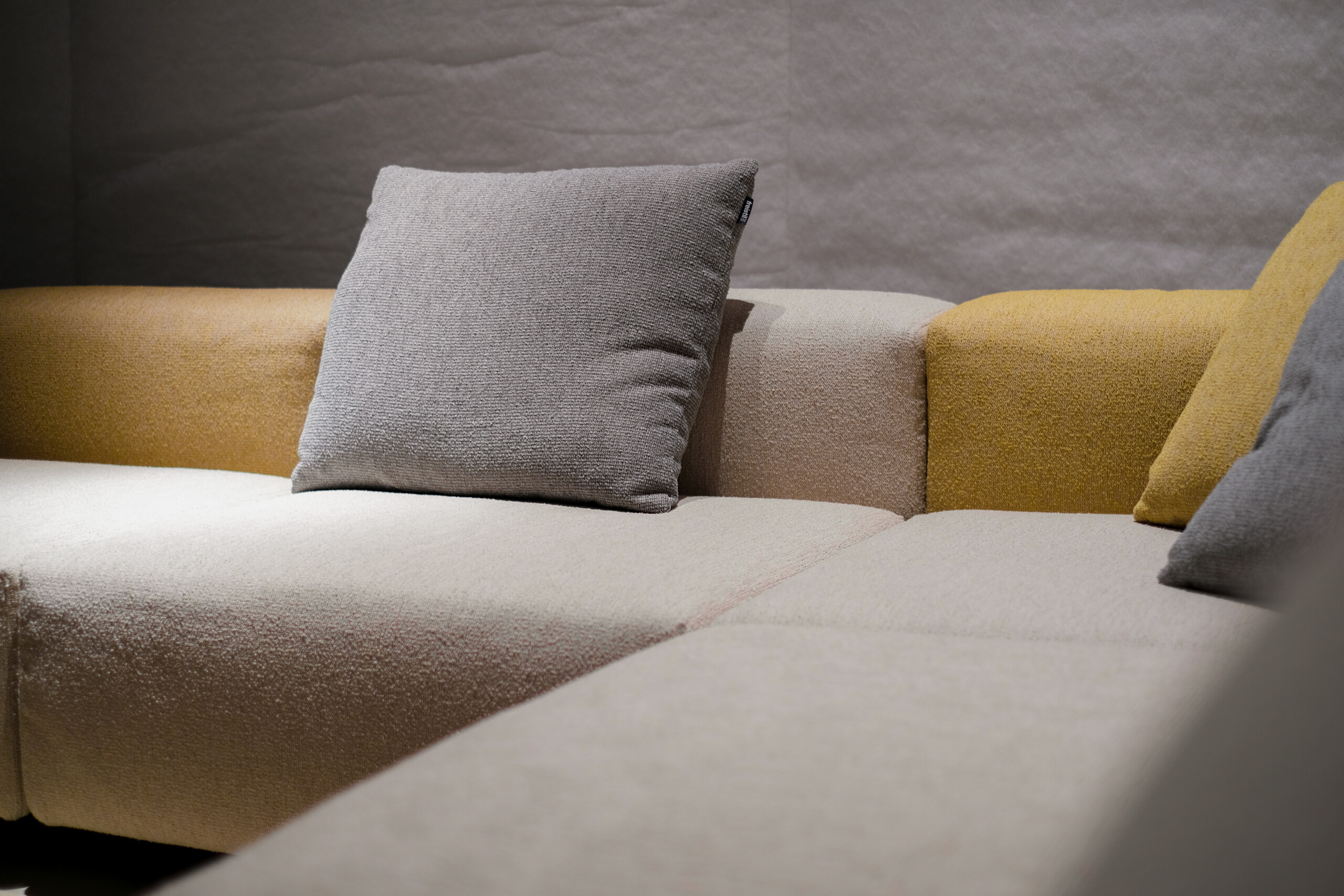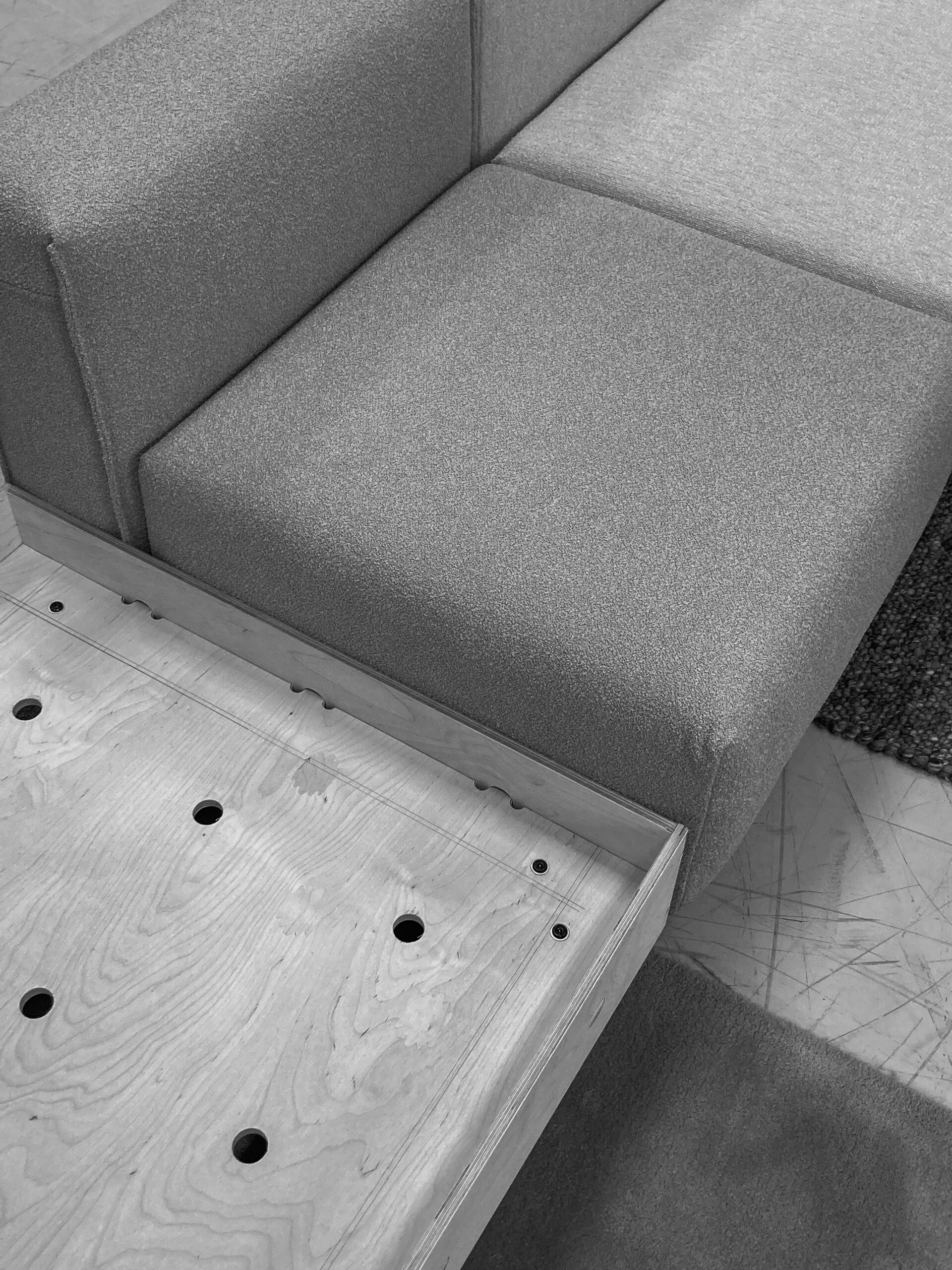Seating comfort for
the future
freistil
Rolf Benz
ECHT, the new sofa system from freistil ROLF BENZ, is designed along circular economy principles. To achieve this, the German company’s development team first had to reexamine some cast-iron certainties.

Ever wondered what’s under the cover of a sofa? It’s probably not a subject that ever crosses most people’s minds; the main concern is usually whether the sofa is comfortable and goes with the rest of the decor. But for upholstered furniture brand freistil ROLF BENZ, the interior workings of a sofa are naturally at least as important as its outward appearance. After all, the upholstery is crucial for seating comfort. With its own production facility in Nagold in German’s Black Forest, ROLF BENZ has all the in-house expertise that goes into creating supremely comfortable, durable and stylish sofas. Yet for freistil ROLF BENZ, the development of the ECHT sofa system marked “a new path that we had to map out together”, says Vanessa Herzog, Director Global Marketing, describing it as “sometimes feeling more like change management.” The goal was to design upholstered furniture that fulfilled the principles of a circular economy in every respect. “That includes a long product life cycle generated by the product’s versatility, a high level of repairability that extends the product’s longevity, and the possibility of sorting the product’s components into separable materials to achieve industrial circularity. We express this as LIVE–REPAIR–RECYCLE.”


ECHT posed an ambitious challenge for freistil ROLF BENZ. Conventional upholstered furniture had always been difficult or impossible to dismantle and recycle as single materials — a prerequisite for circularity. The covers of sofas and armchairs conceal a host of different materials, from wood to metals and foams, often glued or otherwise bonded together. The desire to design a sofa that was recyclable while also meeting high standards of comfort and craftsmanship forced freistil ROLF BENZ to completely reexamine the design of the sofa and the way the upholstery was made — and to take a fresh and highly critical look at all conventional solutions. “Our colleagues in the product development and quality management departments did a really terrific job”, says Vanessa Herzog. “It was an exciting and very enlightening joint project, and we keenly anticipated the results with absolutely no idea of what they would be.” After eighteen months of development, the final product was unveiled as a modular sofa system based on a series of cubes, comprising two different seating and two side elements, which could be completely dismantled for flatpack delivery. None of its constituent parts — cover, feet, wooden frame, springs, foam — are glued or bonded, so they can be taken apart at any time. Customers can either assemble their ECHT sofa themselves or use their retailer’s assembly service.

To achieve the goal of a recyclable sofa, the team at freistil ROLF BENZ developed all-new solutions from scratch, such as the design of the feet. These solutions are the basis of the modular principle underlying the ECHT system, and enable the individual upholstered elements to be flexibly combined. “We also developed an innovative solution for attaching the covers”, points out Vanessa Herzog. “The covers of the ECHT sofa are fixed in place with slim metal fastenings that are easy to attach and remove.” In many upholstered furnishings, the covers are fastened to the frame using hook-and-eye tape. However, the tape is not recyclable as a single material. The biomass foam for the cushioning is also a new product. This cold-foamed polyurethane was developed by BASF, applying their biomass balance approach. The renewable raw materials used for the foam can reduce the product’s carbon footprint. And although polyurethane foam cannot yet be recycled on an industrial scale, “we are confident that this will soon change”, affirms Herzog. Incidentally, recyclability offers advantages in more aspects than sustainability. Designed for easy disassembly, the ECHT sofa system allows covers to be removed and washed, or even replaced altogether if daily life has taken its toll. And the other system elements can likewise be replaced, enabling the sofa to be repaired or adapted to new living conditions such as a house move. As ECHT proves, it is well worth wondering about what’s under the cover of a sofa.
